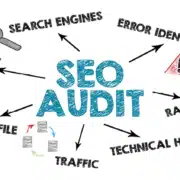Adapt to the Evolution of Language to Connect with Your Audience
Language is ever-evolving as is how we use language, especially due to technology. As technology advances, so does the communication gap between generations. From Baby Boomers to Gen Z, each generation uses language differently. That is why it’s more important to adapt to the evolution of that language if you want to connect with your audiences.
The Washington Post recently published an article that quizzed people on how to communicate with Gen-Z office workers. From punctuation to emojis, their way of communicating can vary differently from other generations. Want to send a smiley face emoji in an email or text? Did you know that the “standard” smiley face is seen as condescending? Yeah, there’s nuance to emojis.
When creating content for your organization, here are some tips to help you craft the right message for all your communications.
Write for the Specific Communication Channel
Are you sharing information on your website, in a press release, brochure, eblast or on social media? Each of these avenues require a different voice and even word length. The copy created for a brochure should not be copied and pasted into a Facebook post. Also, it’s unlikely that your clients are going to read a white paper that you dropped into an eblast, but they may on your website.
While it’s important to share a consistent message across all your communication channels, take time to consider the intention of each channel as well as the most important information for it. Facebook has a different intent than a brochure, but they can still share the same story in different ways.
Know Your Audience
If your company is sharing positive news about a project and mentions that you “slayed” it, your Gen-Z folks will know exactly what you mean but will an older audience? Baby Boomers prefer in-person communications over digital communications. While younger generations are comfortable sharing personal information online if it means getting more personalized communications that get to the heart of their needs. The same goes for what kind of client you have. Is it B2B or B2C? These are all important considerations when it comes to messaging.
Determine your prime audiences and craft the messaging to cater to them. If you’re unsure who that is, consider a facilitation with key stakeholders to help identify them. Resist the urge to use language that may better apply to other groups. Messaging for C-level executives will, more than likely, not include slang or emojis but communications to teachers may since they are more familiar with it. The same goes for choosing which communication channels will reach them. Not every communication channel is a good fit for every audience. This is why we promote the idea of an integrated marketing plan that shares your story in a variety of ways that best suit your audience.
Choose the Right Terminology
Just as the evolution of language continues to grow, so does the terminology that we use. With abbreviations, slang, technical terms and more, the choice of words is important. This also varies from audience to audience. A layperson may need more general terms than a CIO, so choose carefully.
Spend time researching the language that your audience is using and then incorporate those terms into your messaging. There may be words that you would not normally use to describe your organization, but you are writing for your audience, not yourself. You want to create connections with your audience and help them find you digitally, which means using the terms they are using. This will also evolve over time as language continues to grow and change so regular updates are necessary.
The evolution of language means that organizations should continue to adapt as well. Your messaging should adapt to meet your chosen audiences with the terms and channels they use. Research like this will take time and effort. Chartwell has a variety of strategies to collect this insight, so if you’re not sure where to start, we can help.









